Even in the case of elementary p+p reaction at 1.25 GeV there are too many track candidates. The (Jochen's) track cleaner is mandatory to apply before any further combination. First, a user selection function is provided to the track cleaner with very conservative conditions (like in Stefano's analysis). All pictures shown below confront this selection. This is based purely on experimental data therefore it is hard to select the optimum procedure of cutting or cleaning unless not confirmed with the simulation.
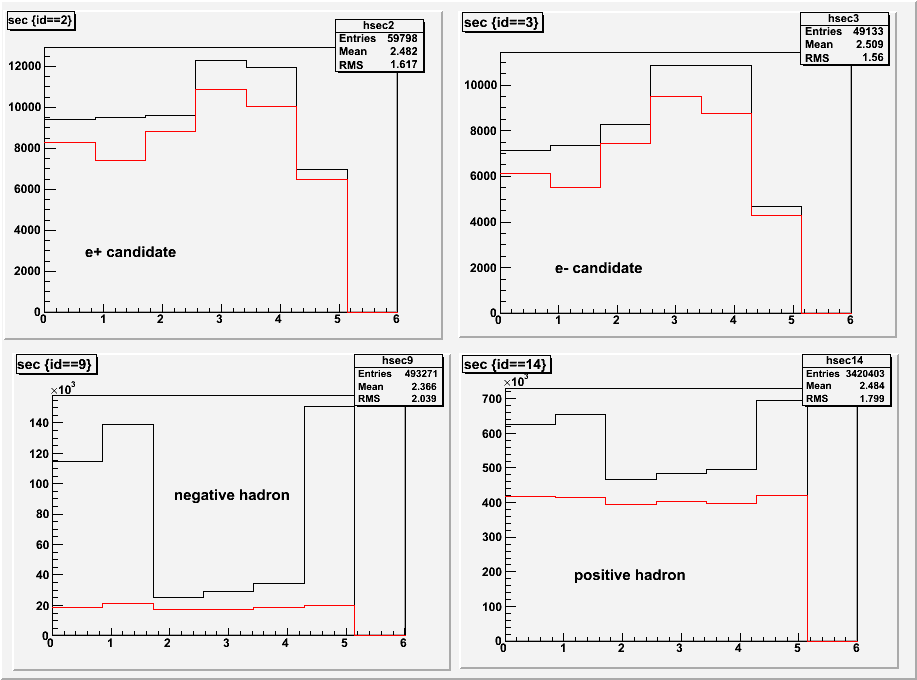
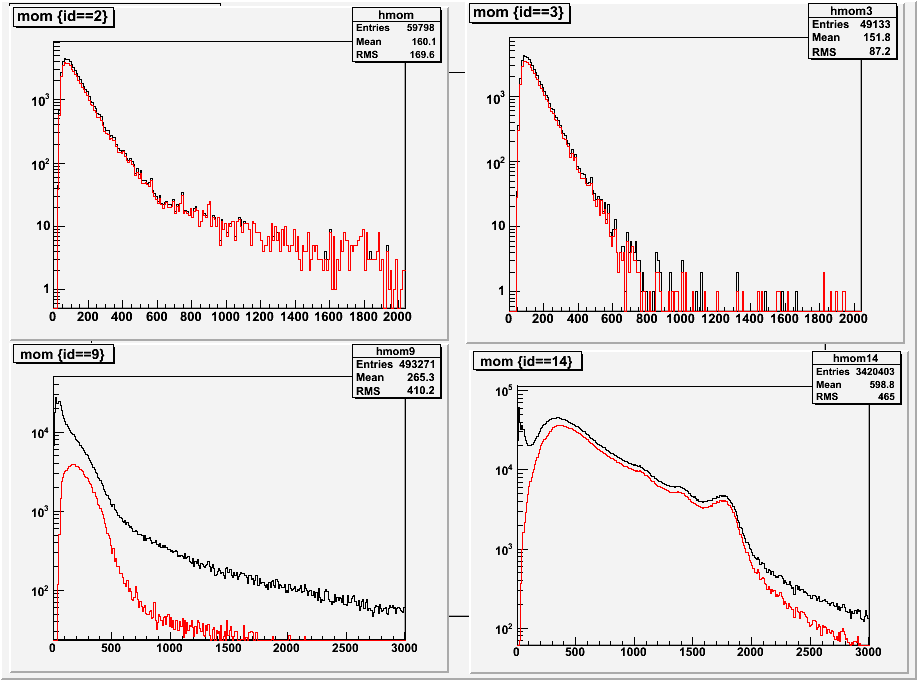
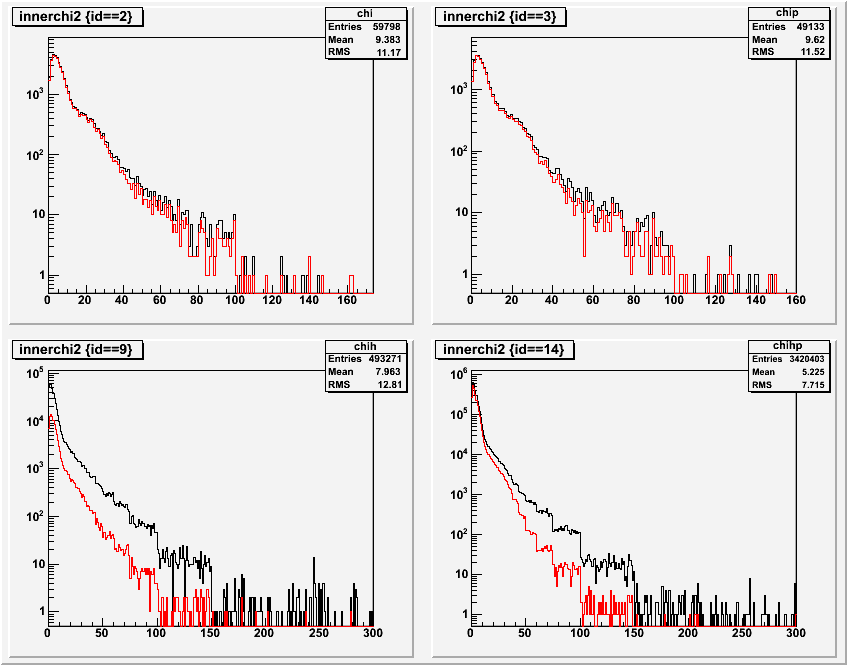
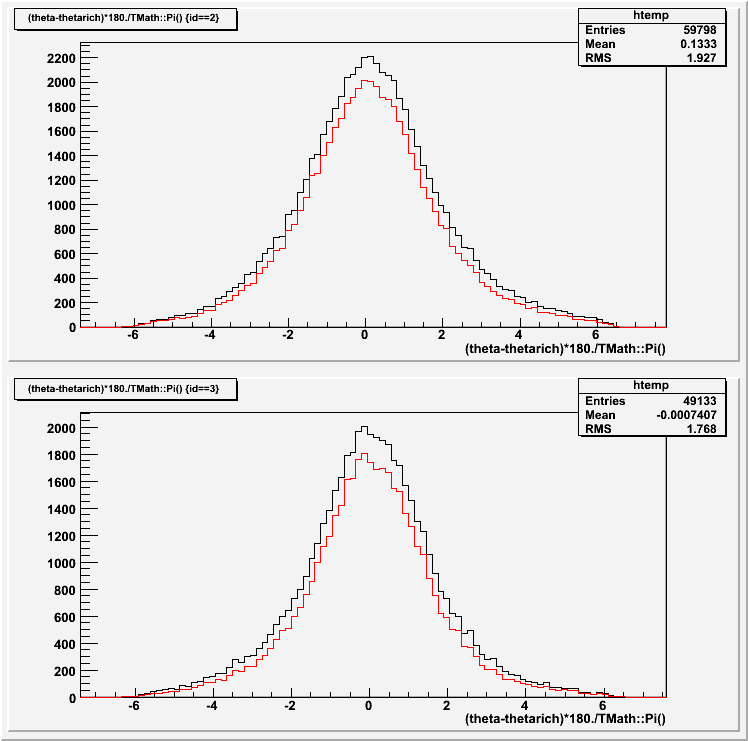
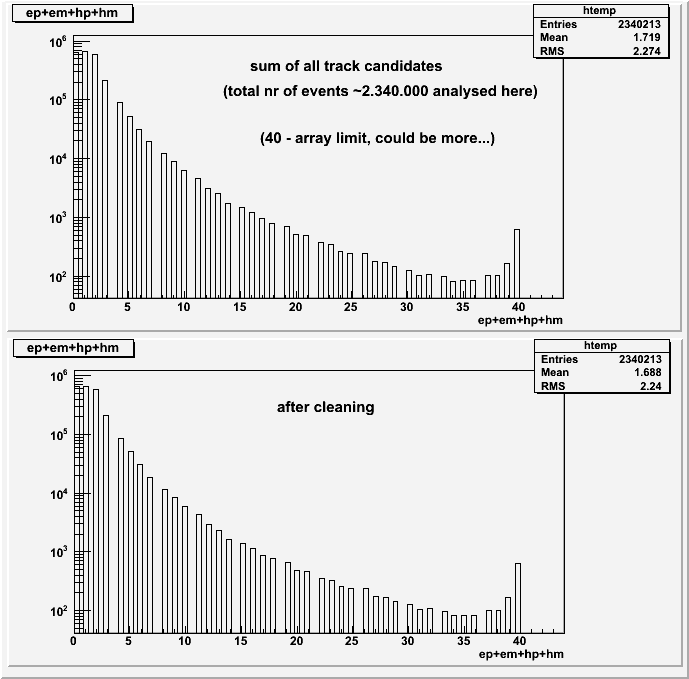 *Leptons*
*Leptons*
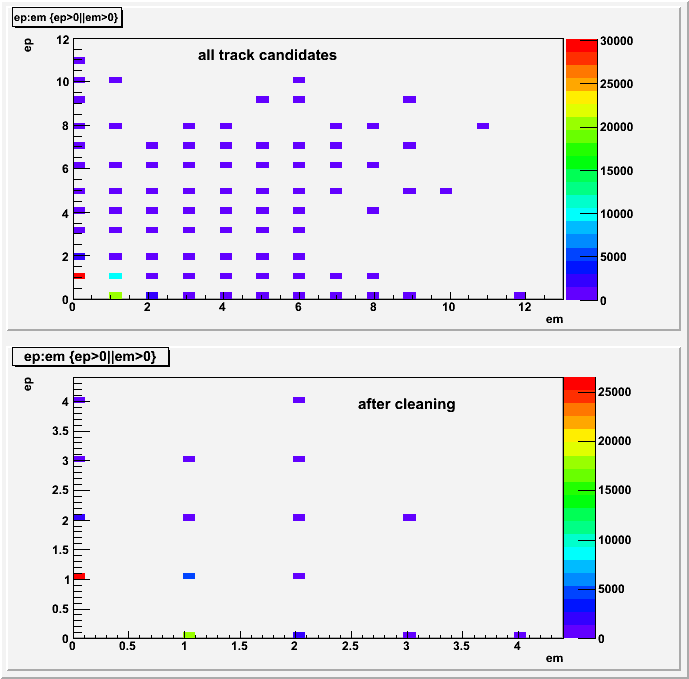 -- WitoldPrzygoda - 22 Sep 2008
*Hadrons*
-- WitoldPrzygoda - 22 Sep 2008
*Hadrons*
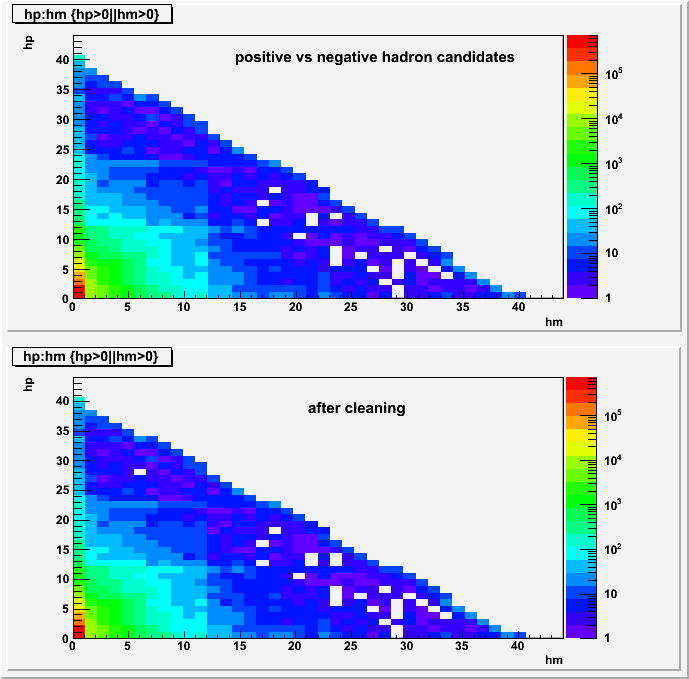
Bool_t myselect(HPidTrackCand* pcand)
{
HPidTrackData* pTrack = pcand -> getTrackData();
HPidHitData* pHit = pcand -> getHitData();
// do your selection
// must return kTRUE if selection criteria is fullfilled
if(!pHit) return kFALSE;
if(!pTrack) return kFALSE;
if (!pTrack->bIsAccepted[2]) return kFALSE;
if (!pTrack->bIsAccepted[4]) return kFALSE;
if (pHit->iSystem<0) return kFALSE;
if (pTrack->nTofRecFlag[4]<1) return kFALSE;
if (pTrack->fMomenta[4]>3000) return kFALSE;
if (pTrack->fRKChiSquare>10000.) return kFALSE;
if (pTrack->getBeta(4)<0.1) return kFALSE;
if (pTrack->getBeta(4)>2) return kFALSE;
return kTRUE;
}
Track cleaning is performed with the setup:
HPidTrackCleaner* cleaner = new HPidTrackCleaner(); HPidTrackSorter::setIgnoreRICH(); HPidTrackSorter::setIgnoreInnerMDC(); cleaner->setUserSelectionLeptons(myselect); gHades->getTaskSet(context)->add(cleaner);Above, the selection function for leptons only used. If I set the similar method for hadrons (setUserSelectionHadrons) but without the condition pTrack->nTofRecFlag[4]<1 which is for leptons only, cleaning cuts off 3-5% of hadron (negative-positive) candidates. It means that in principle we can operate with "default" internal cleaning settings for hadrons.
Track candidate in sectors
This is ditribution of track candidates of various particle candidates (do not pay attention to "id" in the picture), just positrons, electrons, negative hadrons, positive hadrons. Red line: after track cleaning applied. It looks like many "hadrons" which are cleaned afterwards, might be leptons but with no ring correlation, striking in particular in the case of "negative hadron" candidates. Cleaning procedure smooths the hadron distribution whereas we can see rather typical structure for leptons. Beware: these are only track candidates (further pid selections necessary!). track candidate in sectors before (black) and after (red) cleaning
Track candidate momentum
track candidate momentum for lepton/hadron candidates before (black) and after (red) cleaning
Track candidate RK chi2
RungeKutta chi2 for lepton/hadron candidates before (black) and after (red) cleaning
ThetaRICH-Theta, PhiRICH-Phi before (black) and after (red) cleaning
The correlation window with the ring is quite broad and needs further refinement in the postanalysis.
Number of track candidates
Pictures below show all track candidates (positive and negative leptons and hadrons). Only in the case of leptons the cleaning does the job if we mean reduction of maximum appearing track candidates. *Leptons*
*Leptons* -- WitoldPrzygoda - 22 Sep 2008
*Hadrons*
-- WitoldPrzygoda - 22 Sep 2008
*Hadrons*
| I | Attachment | Action | Size | Date | Who |
Comment |
|---|---|---|---|---|---|---|
| |
allcand.gif | manage | 17 K | 2008-09-23 - 02:06 | WitoldPrzygoda | Sum of all track candidates |
| |
chi2.gif | manage | 24 K | 2008-09-22 - 21:34 | WitoldPrzygoda | Track candidate chi2 |
| |
deltaangle.gif | manage | 16 K | 2008-09-22 - 21:44 | WitoldPrzygoda | Lepton track candidate RICH-MDC correlation |
| |
hadroncand.gif | manage | 23 K | 2008-09-23 - 02:08 | WitoldPrzygoda | Hadron track candidate |
| |
leptoncand.gif | manage | 14 K | 2008-09-23 - 02:08 | WitoldPrzygoda | Lepton track candidate |
| |
momentum.gif | manage | 24 K | 2008-09-22 - 18:33 | WitoldPrzygoda | Track candidate momentum |
| |
sectors.gif | manage | 21 K | 2008-09-22 - 15:49 | WitoldPrzygoda | Track candidate per sector |
This topic: Homepages > CreateHomepageTopic > HomepageWitoldPrzygoda > SystematicStudies > BasicObservables
Topic revision: 2008-09-23, WitoldPrzygoda
Topic revision: 2008-09-23, WitoldPrzygoda
Copyright © by the contributing authors. All material on this collaboration platform is the property of the contributing authors.
Ideas, requests, problems regarding Foswiki Send feedback | Imprint | Privacy Policy (in German)
Ideas, requests, problems regarding Foswiki Send feedback | Imprint | Privacy Policy (in German)

